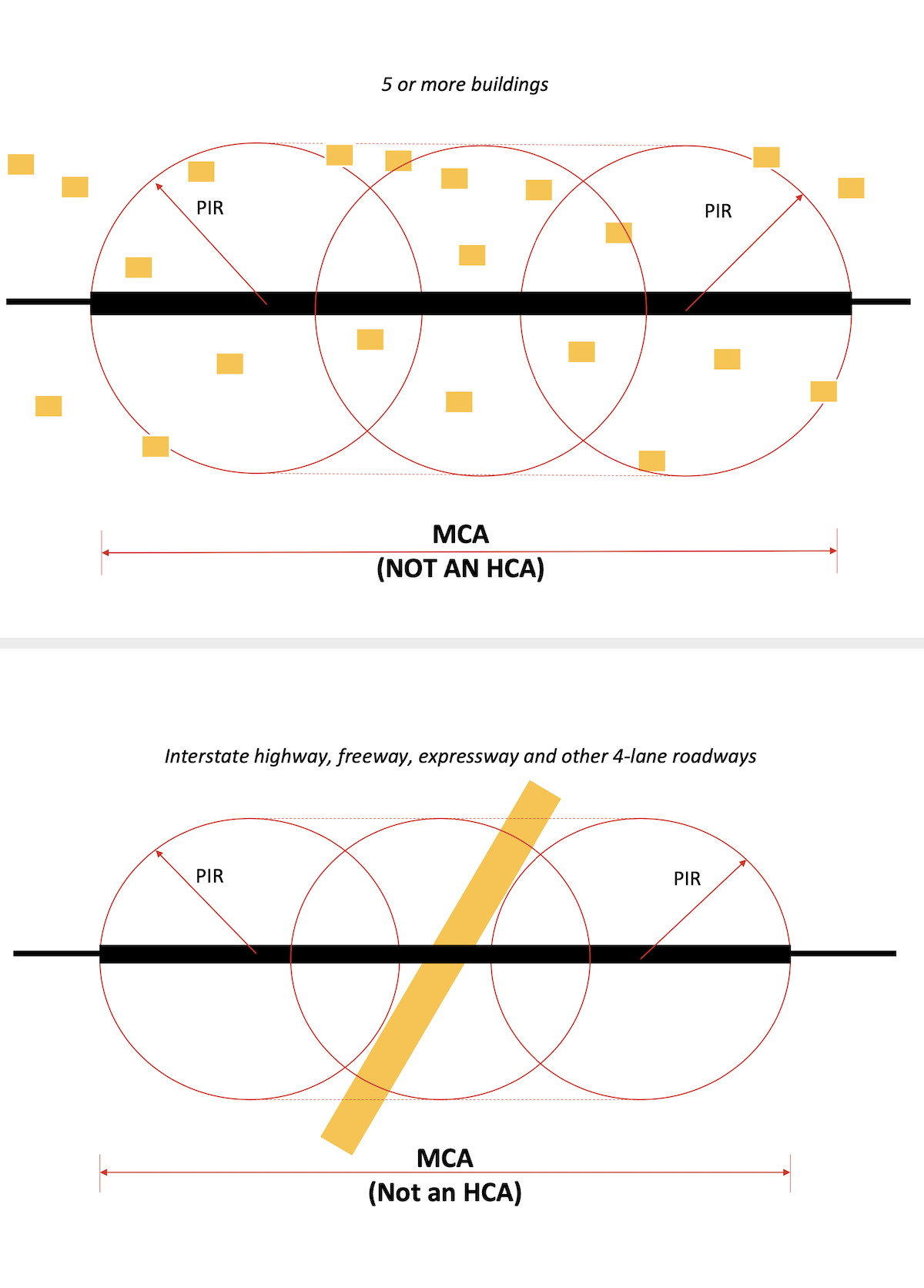December 2019, Vol. 246, No. 12
Features
The Clock is Ticking – Time to Prepare for PHMSA’s Mega Rule
By Curtis Parker, Technical Director, Dynamic Risk
On Oct. 1, the Pipeline and Hazardous Materials Safety Administration (PHMSA) finalized a rule for gas transmission pipelines which has been in development for over eight years. This highly anticipated rule, referred to by many as the “Gas Mega Rule,” is considered to be the most significant change to the existing gas pipeline regulations since 1970 and is likely to have a significant impact on the operation of gas transmission assets in the United States.

The development of the rule was initiated by PHMSA through an Advance Notice of Proposed Rulemaking issued in Aug. 2011, as an initial response to a pipeline incident that occurred Sept. 10, 2010 in San Bruno, Calif.
Following investigations into the San Bruno incident, as well as a pipeline incident that occurred Dec. 11, 2012 in Sissonville, W.V., the National Transportation Safety Board (NTSB) issued specific recommendations to PHMSA to revise existing pipeline regulations.
The Pipeline Safety, Regulatory Certainty and Job Creation Act of 2011, enacted on Jan. 3, 2012, and several of the act’s statutory requirements affected the approach to rulemaking.
The mandates from Congress included requirements for PHMSA to expand integrity management regulations beyond pipelines located within a high-consequence area (HCA), for regulations requiring the verification of maximum allowable operating pressure (MAOP), and elimination of the “grandfather clause” in existing regulations (§192.619(c)) that allowed for selected pipe segments installed prior to 1970 to remain untested.
Additionally, the NTSB issued a Safety Study report Jan. 27, 2015 entitled, “Integrity Management of Gas Transmission Pipelines in High Consequence Areas” that addressed further recommendations for revisions to existing pipeline regulations.
The Notice of Proposed Rulemaking, published by PHMSA on April 8, 2016, detailed proposed revisions to the regulations, and during the following two-month period, an unprecedented number of public and industry written comments were submitted to PHMSA for consideration.
During the timeframe extending from 2017 through early 2019, PHMSA sought feedback on the proposed rule at several meetings of the Gas Pipeline Advisory Committee (GPAC), a group comprised of appointed members representing government, industry, and the public.
The final rule was published by the Federal Register on Oct. 1, 2019 and the effective date is designated as July 1, 2020.
Significant Changes
It is important that prudent gas transmission operators review the changes to 49 CFR, Parts 191 and 192 and adjust integrity programs as necessary to achieve continued regulatory compliance.
As stated previously, extensive additionally prescriptive modifications have been applied to the existing pipeline regulations; four modifications at minimum are likely to have a significant impact for US gas transmission pipeline operators as detailed below.
Moderate-Consequence Area
To address the mandate from Congress to expand to address the mandate from Congress to expand integrity management requirements beyond currently defined high-consequence areas (HCAs), PHMSA has introduced a new definition – moderate-consequence area (MCA).
An MCA (additional definition in §192.3) is generally defined as the area within a potential impact circle (similar to the potential impact circle currently applied for establishing HCAs that: 1) contains five or more buildings; or 2) contains a major roadway (e.g. Interstate highway, freeway, expressway and other 4-lane roadways); and does not already meet the definition of an HCA.
These two criteria for MCA are illustrated in Figures 1 and 2. Based on the definition of the MCA, it is possible that for some operators, the pipeline mileage in MCAs could be greater than the mileage currently within HCAs. Several other requirements within the rule (including for pipeline assessments and MAOP verification will apply to MCAs, substantially increasing the potential impact to gas transmission operators.
Assessments in Non-HCAs
To address the mandate from Congress to expand to address the mandate from Congress to expand integrity management requirements beyond HCAs, PHMSA has expanded requirements for performing pipeline assessments outside of HCAs in Section §192.710.
Specifically, these requirements will apply to pipe segments exhibiting a maximum allowable operating pressure of greater than or equal to 30% of the specified minimum yield strength (SMYS) that are present in Class 3 or 4 locations or in MCAs that also can accommodate an inline inspection (ILI) tool, and that are not already part of existing HCAs.
The rule requires gas transmission operators to perform initial assessments on all such pipeline segments in accordance with §192.710, and based on a risk prioritization schedule, no later than July 3, 2034. For pipelines segments that meet the applicability of §192.710 (e.g. due to change in class location or an area becomes an MCA), the rule requires that an initial assessment is performed as soon as practicable and within a time period not to exceed 10 years after the pipeline segment meets the applicability requirements.
Reassessments are required at minimum intervals of 10 years or less based on the nature and type of anomaly discovered on the pipeline segment. Assessment methods selected must be capable of identifying anomalies associated with each of the threats to which a pipeline segment is considered to be susceptible.
Allowable Pressure
To address mandates from Congress as well as NTSB recommendations, the rule requires that maximum-allowable operating pressure (MAOP) is reconfirmed for pipelines in the new clause, §192.624:
1) Where pressure test records are not traceable, verifiable or complete (TVC) and are in an HCA, or Class 3 or 4 location, or; 2) Where the pipeline’s MAOP was established by the “grandfather clause” (i.e. §192.619(c)), and the MAOP is greater than or equal to 30% of SMYS, and is in an HCA, a Class 3 or 4 location, or an MCA that can accommodate ILI.
The rule requires gas transmission operators to develop procedures for completing all actions in §192.624 by July 1, 2021.
Operators must ensure that the MAOP is reconfirmed for 50% of applicable pipelines by July 3, 2028 and for 100% of applicable pipelines by July 2, 2035.
Five of the six methods allowed by the rule for MAOP reconfirmation include pressure test pressure reduction, engineering critical assessment (ECA), pipe replacement and alternative technology.
It is worth noting that the rule has outlined detailed requirements for the ECA method. Based on Dynamic Risk’s experience of performing ECA for operators, this effort involves extensive data availability, robust tools for data integration, as well as advanced knowledge in analysis using fracture mechanics.
Another method for MAOP Reconfirmation is only applicable for pipelines with a potential impact radius of less than 150 feet. For these pipeline segments, the rule would allow the MAOP to be established at a pressure at least 1.1 times the highest pressure in the previous 18 months but would also require conducting increased patrols and leakage surveys.
Even though the rule allows for a time period of about 15 years to complete MAOP verification, this requirement could represent a challenge for those gas transmission operators operating pipeline systems containing extended mileage of untested pipe or pipeline segments lacking TVC pressure test records.
Material Verification
To address NTSB recommendations, the records for selected pipe material properties must be confirmed as TVC wherever required by 49 CFR 192 (e.g. for certain methods used for MAOP verification (§192.624) and in analyzing predicted failure pressure (§192.712)). These requirements are applicable to pipe, and for selected components (fittings, valves, flanges, etc.).
The rule requires that operators develop procedures for performing destructive and non-destructive tests in order to verify material properties. For all above ground pipe locations, the rule requires operators to conduct tests to address a lack of pipe material property records.
For below ground pipe, operators must opportunistically verify the physical properties during exposure of underground facilities, such as during pipe replacements and integrity excavations, in order to determine that material properties have been verified in accordance with new clause §192.607.
In the final rule published in the Federal Register, PHMSA clarifies that material properties verification requirements are not deemed to be retroactive, mandating the creation and retention of records as operators execute the methodology in § 192.607 on a prospective basis.
Operators who have not verified material property records in accordance with this methodology prior to the effective date of this rule will not be subject to enforcement action based on § 192.607.
Pipeline operators missing or inadequate records post the effective date, must however, follow the verification methodology stipulated within § 192.607, e.g. for certain methods used for MAOP reconfirmation (§192.624), for analyzing predicted failure pressure (§192.712), and whenever an MAOP is established, including for new construction (§192.619).
A significant data review and integration effort may be required by operators to first determine the extent of the record gaps, and as a basis for developing and implementing a potentially extensive ongoing material verification program.
Final Rule
The final rule has now been published, effective July 1, 2020, and gas transmission operators should assess final rule readiness and begin preparing for the potential impact on in-place integrity management programs and operating practices.
At a minimum, an operator should develop a “Mega Rule Response Plan” that:
- Ensures that systems are in place to calculate and identify both HCAs and MCAs on an on-going basis, along with the supporting processes to capture and align pipeline right-of-way adjacent structures along with other pipeline attribute information.
- Determines those pipeline segments that meet the applicability requirements of (§192.624) and develop processes and procedures to perform MAOP reconfirmation by July 1, 2021. In addition, operators should develop a MAOP reconfirmation plan, including:
- Evaluation of optimum pipeline segment MAOP reconfirmation methods, and;
- The data management practices that will be used to capture and integrate MAOP reconfirmation information.
- Determines pipeline segments that require material verification according to §192.607 and develop procedures for material verification that may potentially be required as early as July 1, 2020 in conjunction with analysis of predicted failure pressure during pipeline assessments §192.712.
- Ensures reporting and data management systems are in place to integrate data and perform analysis as a basis to confirm reliability, define and mitigate potential risks, and demonstrate compliance to the regulations.

Author: Curtis Parker is technical director at Dynamic Risk and has over 20 years of technical and management experience in the engineering, construction, maintenance, and operations of critical large-scale energy infrastructure assets, including interstate oil and gas pipeline systems, natural gas utilities, and power generation facilities. He currently provides expertise to transmission and distribution pipeline operators. P&GJ





Comments